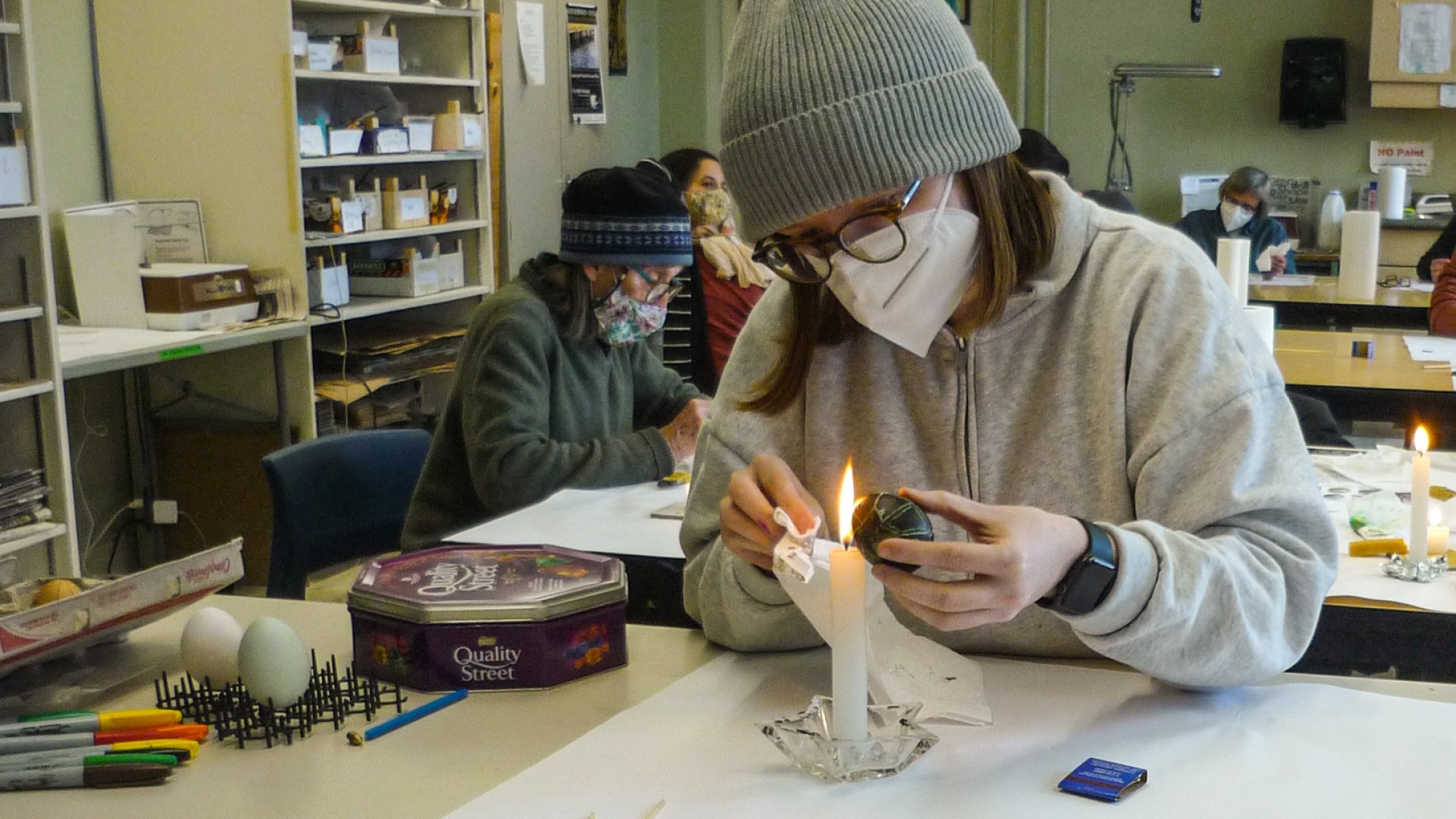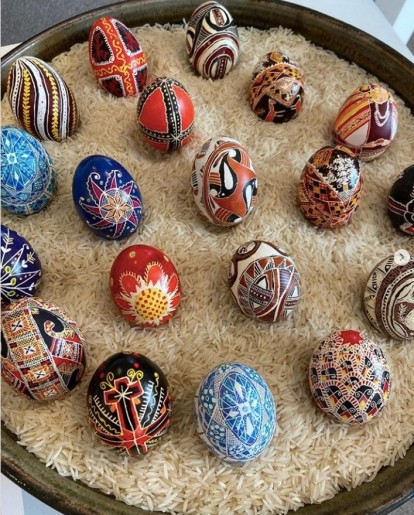
On two consecutive Sundays in March, the StFX Art Department welcomed groups of a dozen staff, faculty, students and community members, who, using dozens of fresh local eggs, were introduced to the ancient Ukrainian art of pysanky, or egg-decorating. The beginner workshops were held to raise money to support refugees and citizens affected by the invasion of Ukraine that began on February 24.
Registration was by donation, and the Art Department was able to raise $2,485, which was distributed between the Red Cross Ukraine fund, the Coalition to Support Vulnerable Black People in Ukraine, and All Out, which supports LGBTQ+ refugees fleeing Ukraine, says organizer and Art Department instructor Janette Fecteau.
Fundraising continues through the sale of mother and daughter, Marilyn Malis and Elin Cunningham’s intricately-decorated eggs at Red Sky Gallery on Main Street, until Easter.

In welcoming participants, Ms. Fecteau drew attention to the similarities between current events in historical context and the history of colonial land grabs on ancestral and unceded Mi’kmaw territory. “Action is important in the face of injustice,” she said, “and art activism provides a unique opportunity to connect people across cultures while supporting victims of oppression.”
Art Department Chair Dr. Sharon Gregory gave participants a brief primer on the history and culture of Ukraine, which is situated on fertile and mineral-rich land and has suffered numerous invasions over centuries. There is a rich culture of visual art there, including the art of pysanky, which is thousands of years old and pre-dates Christianity in Ukraine.
The word pysanky derives from the verb “to write” in Ukrainian. Artists write designs on eggs with a fine stylus (or kistka) filled with fragrant, melted beeswax, and the artwork undergoes a series of alternating wax and dye applications. The dyes colour the eggshell only where there is no wax barrier, so the colours combine with each other on the pysanka (the singular noun) as the process goes on. The results can be intricate and multi-coloured.
Traditionally the designs have symbolic meanings, as pysanky instructor Leah Campbell explained. They are often created for specific people, so the wishes of the artist for the recipient are embedded in the process of creation.
The act of creating a pysanka is meditative, says artist Marilyn Malis. “I started doing pysanky around 45 years ago. Although I am of Ukrainian heritage, I learned the art from a Ukrainian neighbour and passed it on to my family. My two sons and daughter, along with their friends, have grown up doing pysanky at Easter time. It’s a beautiful, peaceful experience creating a pysanka.”
Ms. Malis, along with local pysanky artists Shanon Archibald and Larissa Strong, co-led the workshops with Ms. Campbell.
Ms. Strong, who learned the art from her mother, spoke of her deep roots with “writing eggs” stretching back through her grandfather who brought pysanky supplies when he immigrated to Canada from Ukraine.
Ms. Fecteau says most workshop participants were new to the art form, and soon the room took on the peaceful atmosphere of folks absorbed in a new and almost magical-seeming process.
She says Ms. Campbell provided traditional patterns to follow, in an introduction to the language of the ancient symbols. Participants were also encouraged to create their own free-form pysanky. By the end of each workshop, there were dozens of unique and colourful eggs to admire.
“People enjoyed themselves thoroughly, finding the afternoon an oasis of calm in busy and stressful times,” says Ms. Fecteau.
She says the workshops also created a fledgling pysanky community in Antigonish; they were a catalyst to push seasoned pysanky artists to unpack their supplies and get back into “writing” eggs, and for new ones to continue to explore this ancient art that has the power to connect people across town and campus, and across the world.

